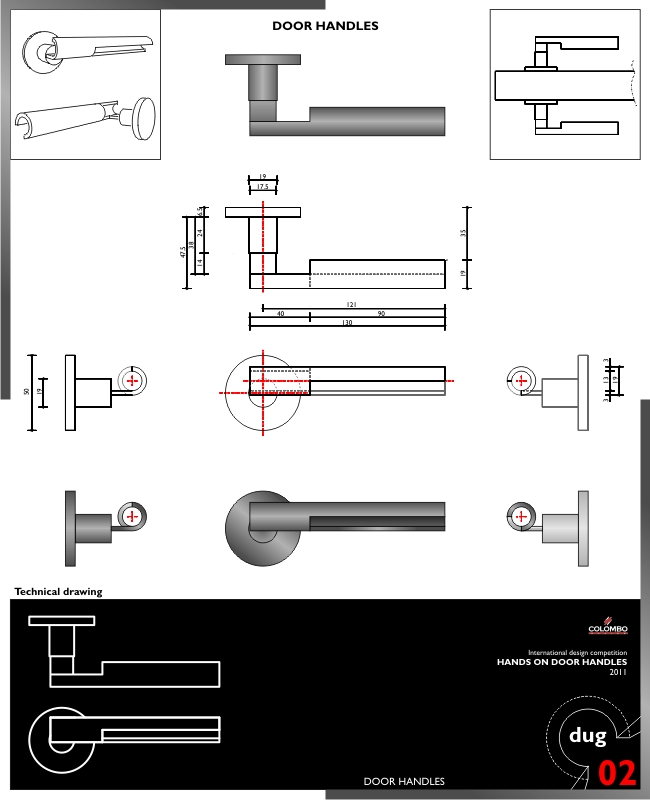
dug by paolo padovan from italy
designer's own words:
"dug" is the name of the handle.
The idea is to eliminate all volumes that appear to be unnecessary in an object like this. Remove a volume from another solid and then remove part of the casing. Reuse the surfaces to be connected to the link with the door. Keep the essential parts to ensure the strength and use of the handle.
Restart from the most classical and historic line of the handle designed for residential, industrial and service sectors, to translate it into a essential object but with new life.
"dug" comes from the idea to create a handle that is private in the form of those parts where the contact of the hands does not exist.
Forcing those who use it to make a movement, pushing down or pulling or pushing, which is unique and correct, to take only the necessary parts of our handle.
The connecting element of the body of the handle whith the door is designed starting from the development of the surface of the cylinder.
The visual connection between the handle and the escutcheon, is achieved by a solid cylinder. The cylinder, like a bar of connection, seems to be contrary to the idea from which it was thought the handle. Instead, the section, gives the idea of where there is greater stress on the lever..
"dug" is designed as a handle for the home, but wants to maintain the characteristics of an object resistant and strong, suitable for any type of workplace.
preliminari study
 door handles
door handles
 other types of handles
other types of handles